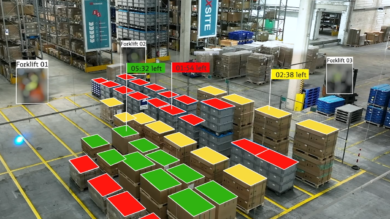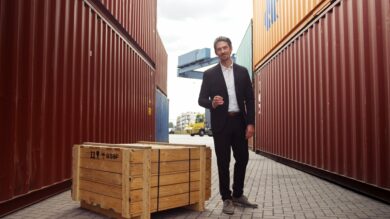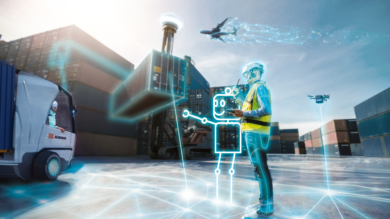Business continuity during COVID-19
DB Schenker has implemented social distancing wearables in its logistics operations in Neu-Isenburg, Germany. The wearables, developed by technology company Kinexon, are designed to protect against the spread of COVID-19 by alerting wearers when a minimum distance is reached.
The wearables are in operation at DB Schenker’s warehouse in Neu-Isenburg, just outside of Frankfurt. The location, which serves the semiconductor and pharmaceutical industries with a focus on spare parts handling, is 14,800 square meters – roughly the size of two football pitches – and employs around 100 full-time staff.
The uncertainty surrounding the COVID-19 pandemic caused Finn Emmerich, Site Manager at Neu-Isenburg, to start searching for additional prevention methods as early as March 2020. At this particular location, it is imperative to keep the business running at all times. DB Schenker operates 24 hours per days, 7 days per week and 365 days per year for its customers, with spare parts ready for pickup in less than two hours throughout the entire year.
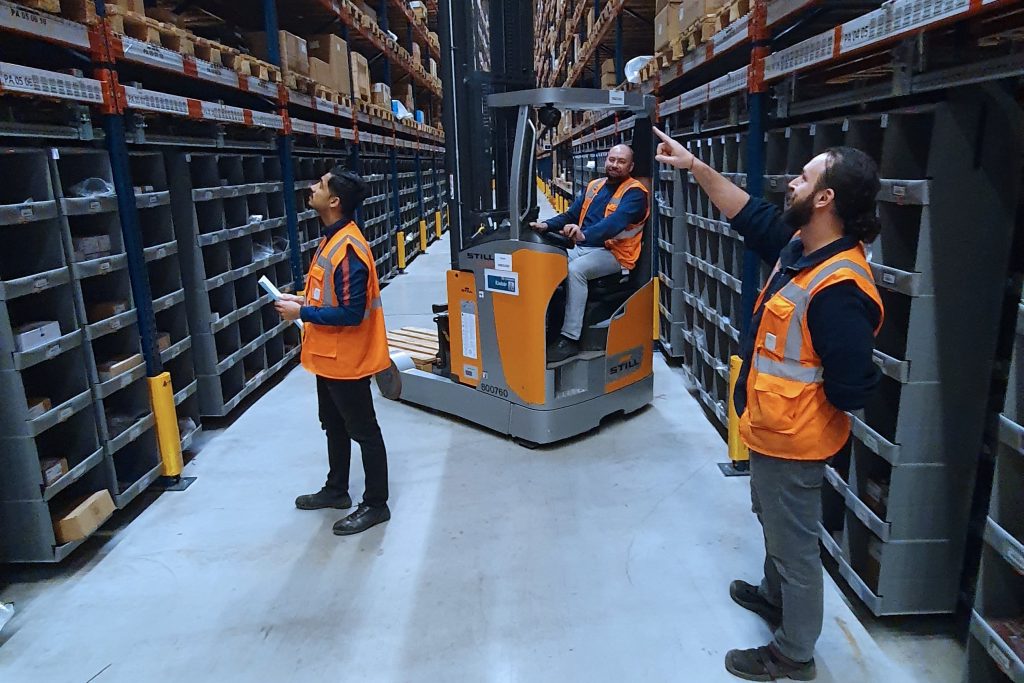
Smart technology from Kinexon
Kinexon SafeZone provided the perfect solution to overcome uncertainty with data-driven decisions. The Internet of Things solution uses sensor technology to provide accurate and real-time contact warning and contact tracing, in order to protect companies against the spread of COVID-19. The SafeTag is the heart of the solution: a small device which can be worn as a wristband or attached to the workwear to measure distance with an accuracy of up to 10 centimeters at a rate of once per second. Once a minimum distance is reached between defined individuals, the device provides a visual and audio warning via an LED light and acoustic alarm function. With a weight of just 15 grams and a battery life of up to 24 hours, the device is non-invasive and easy to use. The entire application is flexible and easy to configure, meaning it can be applied in various environments.
“As Edwards Deming said, ‘Without data, you’re just another person with an opinion.’ It can be dangerous to base pandemic measures on opinions, especially when the health of our colleagues is at stake. In terms of providing business continuity for our customers, the wearables have already proved their value.”
DB Schenker planned the warning settings and shared information about the new solution with the team in advance, meaning no time was wasted once the technology arrived on site. Thanks to the simple plug and play set-up, the system was functioning within a few days. The solution was immediately proved effective during the implementation period. The number of critical contacts (with a distance of less than 1.5 meters that lasted longer than 15 minutes) was prevented by 100 percent within the first five days. The number of risk contacts (with a distance of less than 1.5 meters lasting longer than 60 seconds) was additionally reduced by 58 percent.
In addition to the social distancing function, the device also performs contact tracing. In case an infection occurs, the technology can identify critical contacts with other team members in less than 15 minutes. This information can be used to act fast and avoid the further spread of COVID-19 at the location. As a result, only key contacts would need to quarantine, instead of an entire shift or the entire site.
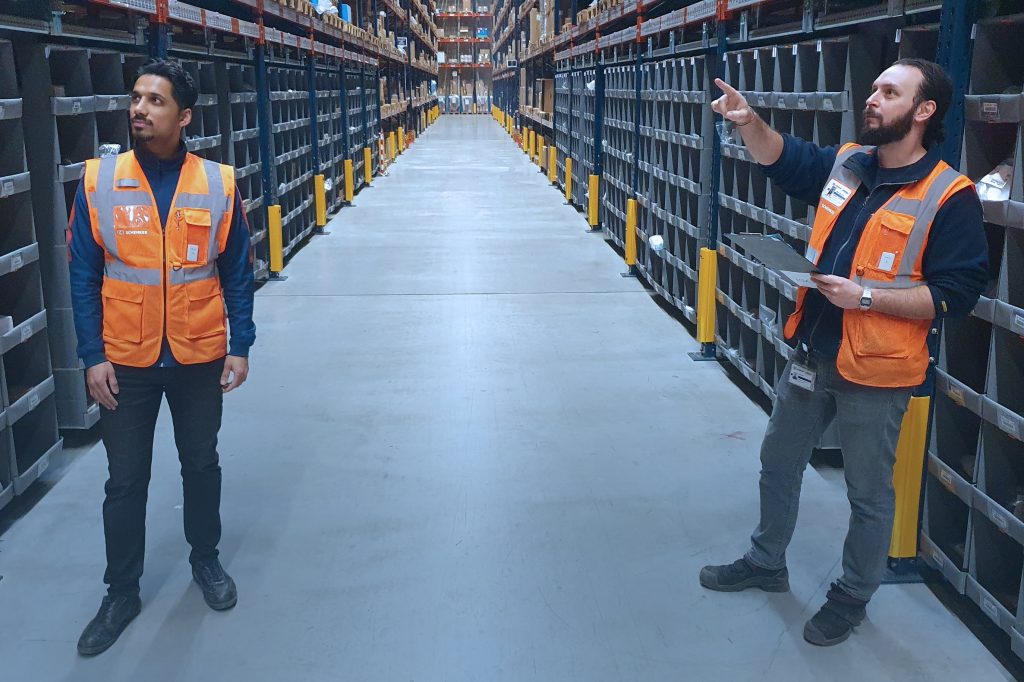
Finding the new normal
Thanks to Kinexon’s data-driven approach, the solution was widely accepted by the team at Neu-Isenburg. SafeZone enabled the team to quickly find their new normal. Instead of strict shift segregation, a fluent shift model was created – allowing more flexibility and avoiding shutdowns due to cleaning between shifts. The wearables also allowed more employees to be on site at the same time, meaning business could continue as usual. The SafeZone wearables are the cornerstone of a wider business continuity plan in place at DB Schenker’s branch in Neu-Isenburg, which maps out measures to prevent the spread of COVID-19.
Based on the successful implementation in Neu-Isenburg, DB Schenker is exploring further operation of smart wearables in Chicago, USA, and Switzerland. The social distancing wearables for logistics in Neu-Isenburg will remain in operation until COVID-19 safety measures are no longer necessary. The team is already working together with Kinexon to develop additional solutions which go beyond COVID-19 safety measures. These include sensors to allow automatic communication between workers and material-handling equipment, in order to avoid collisions.
Published: February 2021






